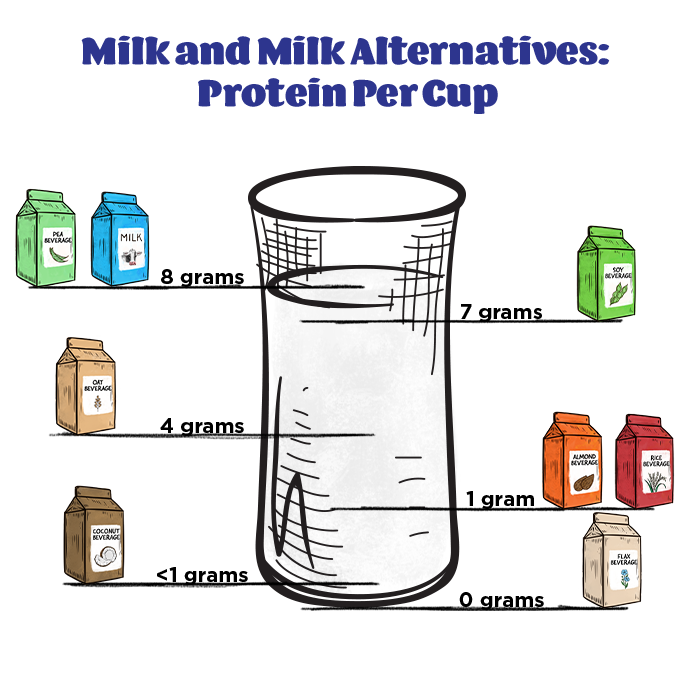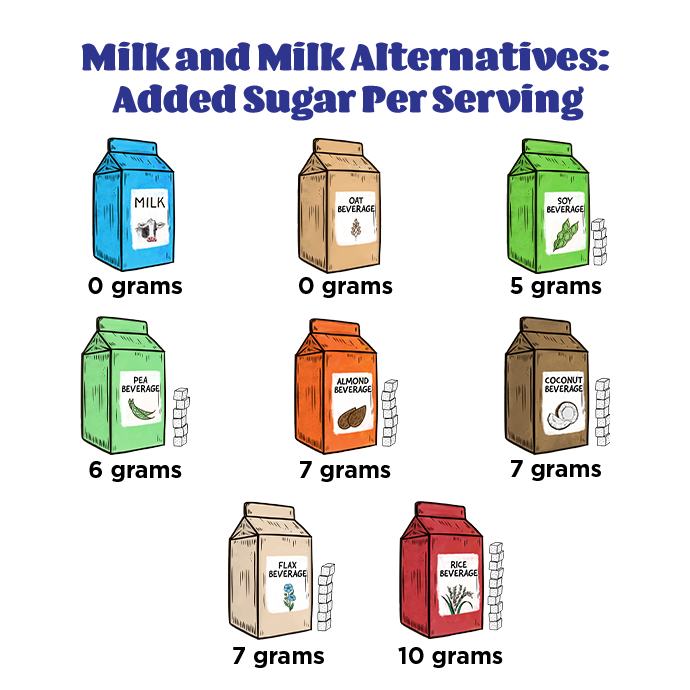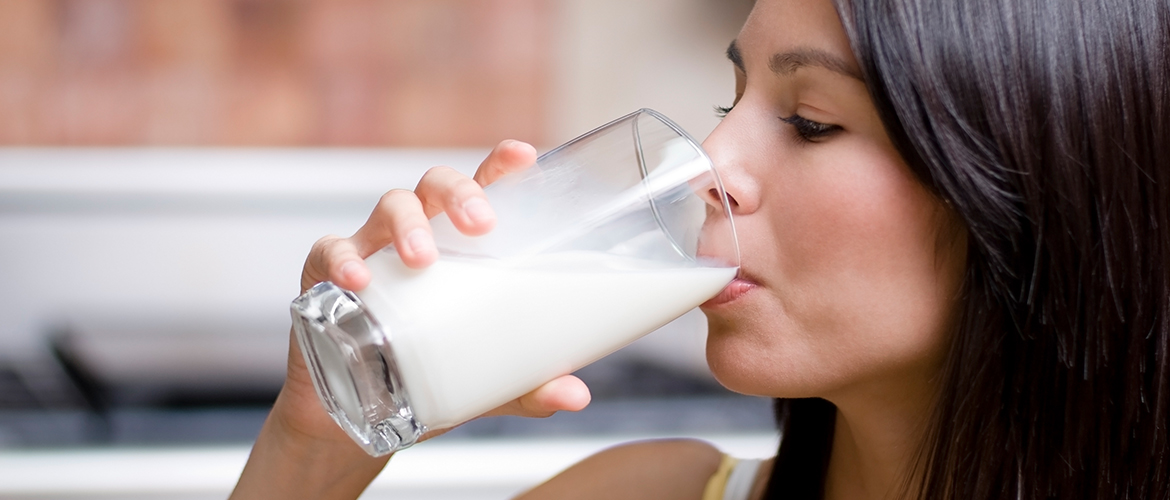From cashew and almond milks to soy and coconut milks, today’s supermarkets offer an expansive range of nondairy milk offerings. At your local grocer, you can find a variety of dairy-free alternatives, including hemp, oat, rice and even pea milk. But when it comes to nutritional value, not all milks are created equal. See how cow’s milk and milk substitutes compare.
Dairy Milk – A Nutrient Powerhouse
Cow’s milk is a good or excellent source of thirteen essential nutrients, including protein, potassium, phosphorus, calcium, iodine, selenium, zinc, vitamins A, vitamin D, riboflavin (B2), niacin (B3), pantothenic acid (B5) and vitamin B12. Whether it’s fat-free, low-fat, lactose-free or flavored, the Food and Drug Administration mandates that cow’s milk is not only safe to drink, but that it meets a standard of identity – meaning that it contains all of these nutrients in the same amounts in every glass. Nondairy milks have no standard nutrient composition, so their nutritional content may vary from brand to brand. Additionally, some nondairy alternatives are supplemented with nutrients naturally found in milk while their nutritional impact has not been thoroughly studied. Cow’s milk is naturally nutrient-rich and backed by decades of research.
Other Nutritional Considerations
As a registered dietitian, I compare foods based on the company they keep. While calories play a role in overall nutrition, they aren’t the only thing to judge. Here are a few things to keep in mind:
Calcium: Among milk’s unique package of nutrients, its naturally occurring calcium is readily absorbed by our bodies. While some milk alternatives may contain more calcium per serving than cow’s milk, the bioavailability of the calcium used for fortification needs to be taken into account. When comparing cow’s milk with nondairy milk alternatives, it’s important to consider both the quantity and quality of the essential nutrients contained in each.
Protein: Milk is a great source of high-quality protein, with an average of 8 grams per cup. In comparison, many nondairy milk alternatives have 1 gram of protein or less per cup. Do you know how much protein is in your nondairy alternative?

No added sugar: When you look at the nutrition facts panel on a gallon of milk, you will find sugar, but it’s important to note that the sugar in milk is not added; rather, it’s the naturally occurring lactose found in cow’s milk. Take a peek at your milk alternatives and make note of the sugar – is it added or naturally occurring?

Return on Investment, Guaranteed
At 25 cents or less per cup, milk is a nutritious bargain and a great return on investment. When looking at cost per serving, which of these beverages is most affordable?

Simple Ingredients
Milk is a natural product without added sugars, stabilizers or flavorings, which are often found in the ingredient list of nondairy milk alternatives. Typically, milk has three ingredients – milk, vitamin A and vitamin D. Take a look at the ingredient lists of nondairy alternatives and compare them to cow’s milk – you may be surprised at what you find.

A Solution for Lactose Intolerance
Even if you are lactose intolerant, many options exist that allow you to enjoy the nutrition and health benefits of dairy without having to ditch it for a nondairy alternative. Whether it’s choosing lactose-free milk or other dairy foods that are naturally lower in lactose, like yogurt or natural cheeses (such as cheddar, Swiss or mozzarella), there is a solution for everyone in the dairy case.
Disease and Risk Reduction
Current dietary guidelines recommend three servings of low-fat or fat-free milk, cheese or yogurt daily, for adults and children 9 years and older, acknowledging that the dairy group contributes many important nutrients. These recommendations are supported by scientific evidence that shows milk, as part of a balanced diet, has been associated with improved bone health, lower risk of cardiovascular disease, reduced risk of Type 2 diabetes and improvements in weight management.
Recovery Benefits for Athletes
Athletes who are looking to dairy beverages as a post-exercise recovery product must remember that carbohydrates and quality protein are behind the benefits of choosing cow’s milk. Research in adult athletes has shown that the high-quality protein profile of cow’s milk is well suited for recovery, containing both fast-acting protein for immediate recovery and slow-acting protein for long-term healing and muscle building. Additionally, the proteins in milk are complete, which means that every glass contains a full mix of the essential amino acids our bodies need.
Next time you’re choosing a beverage from the dairy case, take a closer look at the ingredient list and nutrition facts panel and see what you find – real cow’s milk may be a better bet than you thought! Test your knowledge and learn more here.




